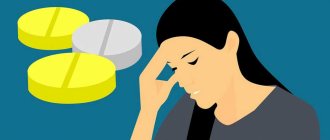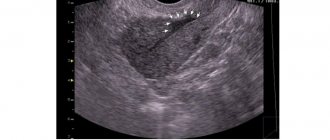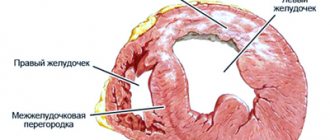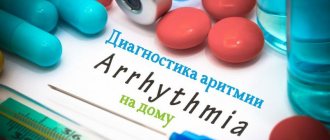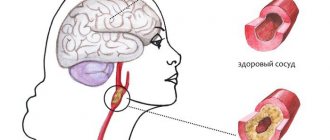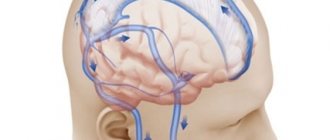Vegetovascular dystonia (VSD) is one of the few syndromes in medicine that causes a lot of disagreement among doctors. There are still no uniform criteria for diagnosis and therapy, so patients have to face many difficulties. Treatment of VSD should begin from the moment you seek medical help, and in modern realities a person has to undergo many examinations. As a result, the patient continues to experience painful symptoms of vegetative-vascular dystonia, and the doctor does not understand how to cure VSD and again sends the patient for further examination. This vicious circle can last from several months to several years.
What is VSD?
To explain the symptoms and treatment of VSD, it is necessary to have an understanding of the regulation of our body’s activities. The functioning of all internal organs is ensured by complex and multi-level relationships between the central and peripheral nervous systems.
The central cord includes the brain and spinal cord. The peripheral nervous system is represented by numerous nerve endings in organs and tissues. Some of them are under the conscious control of a person, for example, if you want to make some kind of movement, an impulse from the brain arrives to the nerve ending in the muscles. This section is called the somatic nervous system.
The other department is vegetative. It is responsible for the work of all internal organs and changes their activity, depending on environmental factors, physical activity of a person or his psycho-emotional status. This part of the nervous system works independently, that is, a person’s volitional efforts are not able to influence its activity.
The autonomic nervous system is responsible for the activity of all internal organs. Moreover, it also consists of two sections: sympathetic and parasympathetic. In their action, they have opposite effects on organs. For example, the sympathetic department increases the contractile activity of the heart, and the parasympathetic department reduces the frequency and strength of heart contractions.
In medicine, the term VSD is understood as a pathological condition when the normal relationship between two parts of the autonomic nervous system is disrupted. There is still no consensus among doctors about this syndrome.
Some clinicians do not consider VSD as a disease, but rather as a reversible pathological process based on dysfunction of the nervous system. At the same time, without timely correction, vegetative-vascular dystonia can develop into a disease of the heart, blood vessels, gastrointestinal tract or nervous system.
Many doctors agree that the syndrome is of a mental nature. All complaints with which the patient comes to the appointment are regarded as psychosomatic, that is, “arising” from mental and emotional disorders.
Despite disagreement about what it is, VSD requires complex treatment. The existing symptoms of vegetative-vascular dystonia have a pronounced negative impact on the condition of patients.
Treatment
Therapeutic measures consist of a set of effective methods, each of which is selected individually. Since most of the occurrences of VSD occur due to stress, it makes sense to pay attention to ways to combat them:
- normalization of sleep;
- rejection of bad habits;
- building an adequate work and rest regime, if necessary, the issue of changing jobs is considered;
- nutritious nutrition in compliance with the meal schedule;
- performing special sets of physical exercises, therapeutic exercises, yoga;
- work with a psychologist (individual or group classes, psychological trainings, consultations);
- physiotherapeutic procedures (massage, electrophoresis, contrast and therapeutic showers, etc.);
- Spa treatment.
All of the above methods are quite effective; when used, not only the disappearance of VSD symptoms is noted, but also an overall positive effect on the body as a whole.
Causes and predisposing factors
The causes of VSD remain the subject of debate. These are due to differences in opinion about what the syndrome itself is. A number of doctors perceive vegetative-vascular dystonia as a consequence of diseases of any organs. The appearance of symptoms of vegetative-vascular dystonia is explained by secondary disturbances in nervous regulation against the background of the existing disease. For example, with cardiac manifestations of VSD, the doctor begins to look for pathology of the heart and blood vessels. Failures in finding the disease are explained by incomplete laboratory and instrumental examination of the patient.
Modern medicine is of the opinion that VSD is caused by excessive overload or disturbances in the psycho-emotional sphere. The variety of symptoms that mimic the pathology of internal organs is actually a manifestation of psychological stress. This is confirmed by laboratory and instrumental data. During the examination of the patient, no abnormalities in the internal organs are revealed.
Autonomic dystonia is part of the group of neurotic disorders (neuroses). This group of conditions is determined by the characteristics of the response to stressful situations. At the same time, in a number of patients, the symptoms of VSD (cardiac, gastrointestinal, respiratory) come to the fore and are accompanied by painful experiences.
The psychogenic nature of vegetative-vascular dystonia is also explained by the variety of mental disorders in patients with this diagnosis. Somatic (organ) manifestations are often combined with anxiety-phobic and obsessive-compulsive disorders, depression. When taking a detailed history, patients are found to have had traumatic situations in the past, signs of social maladaptation, family and interpersonal problems.
In addition to psychoemotional disorders, the following factors play a role in the development of VSD:
- hereditary and constitutional features of the autonomic nervous system;
- unfavorable course of pregnancy, childbirth and the early postpartum period;
- diseases of the central nervous system;
- characteristics of the patient’s character and personality;
- hormonal imbalance;
- excess body weight;
- infectious diseases;
- suffered acute and chronic diseases, as well as surgical interventions.
A special place in the causes of vegetative-vascular dystonia is given to lifestyle disorders. Predisposing factors may include a sedentary lifestyle, disturbances in sleep-wake cycles, bad habits, monotonous work, mental and physical stress.
Causes of vegetative-vascular dystonia
VSD can develop against the backdrop of a huge number of diverse factors. Among them are especially distinguished:
- psychological – severe or constant stress, depressive states;
- physical – severe physical fatigue, exposure to vibration, high temperatures, sunstroke;
- chemical – addiction to alcohol, nicotine, narcotic substances, taking a number of medications, in particular those containing ephedrine, caffeine, bronchodilators;
- changes in hormonal levels - adolescence, pregnancy and lactation, menopause, use of hormonal contraceptives, especially with frequent periods of withdrawal;
- infectious – acute and chronic diseases of the respiratory system, kidneys, brain;
- neurological disorders - Parkinson's disease, traumatic brain injury;
- endocrine diseases – diabetes mellitus, thyrotoxicosis;
- pathologies of the cardiovascular system - arterial hypertension, coronary artery disease.
It is believed that the main cause of the development of VSD is stress.
But not all people who have even several of the listed diseases develop vegetative-vascular dystonia. Women suffer from it 2 times more often than men, and almost half of all cases of VSD diagnosis occur in young girls who have not yet turned 25 years old. And only 33% of women with vegetative-vascular dystonia are over 25 years old.
Heredity plays a significant role in assessing the risk of VSD. Very often it first appears in childhood or adolescence. As one gets older, the disorder can be compensated and the attacks disappear. But the impact of negative factors can reverse the situation and again provoke the occurrence of vegetative-vascular dystonia.
The impetus for its development can be:
- psychological characteristics of the individual, especially suspiciousness and a tendency towards hypochondria;
- unfavorable socio-economic, environmental conditions (lack of sunlight, sedentary lifestyle, lack of funds, lack of nutritional culture, consumption of cheap, low-quality products, etc.);
- intrauterine pathologies - infections, hypoxia, fetoplacental insufficiency, rhesus conflict, etc.
Sometimes VSD is a transient reaction to any strong emotional shocks or emergency situations.
Kinds
There is still no unified classification of vegetative-vascular dystonia that would take into account the diversity of its manifestations. In medical practice, VSD is most often divided into several types:
- vagotonic – the clinical picture is due to the predominance of the parasympathetic department over the sympathetic one (low blood pressure, chills, dizziness, lightheadedness, “lump in the throat” and others);
- sympathicotonic - symptoms are associated with hyperfunction of the sympathetic department (increased blood pressure, rapid heartbeat, feeling of heat);
- mixed - both types of symptoms may be present in the clinical picture.
Depending on the mechanism of development, the syndrome is divided into two types: primary and secondary. The primary form of VSD occurs independently, the secondary form occurs against the background of existing diseases of various localizations.
Vegetative-vascular dystonia is also divided into subtypes depending on organ symptoms. Here are several clinical variants of VSD:
- changes in the cardiovascular system;
- disruption of the gastrointestinal tract;
- psychoemotional and nervous disorders;
- changes in the functioning of the respiratory system.
The most common VSD involves the cardiovascular system. This type of syndrome has its own name - neurocirculatory dystonia. It is divided into several clinical subtypes.
| Hypertensive | Hypotonic | Cardiac |
| Characterized by increases in systolic blood pressure, palpitations and interruptions in heart function. Combined with other manifestations of sympathicotonia (for example, hot flashes, sweating). | It is characterized by lowering blood pressure and slowing heart rate. Other symptoms include signs of vagotonia (dizziness, fainting, and others). | The main complaint is pain in the heart area of varying nature and severity. Most often, the pain is stabbing and occurs against the background of emotional stress. |
Any of the listed variants of vegetative-vascular dystonia can be of three degrees of severity: mild, moderate or severe. The severity of the condition is assessed based on the client’s complaints and the severity of clinical manifestations.
The course of VSD can be permanent (constant) or paroxysmal (paroxysmal). The first variant of the syndrome is spoken of in cases where the symptoms bother you almost every day and are mild or moderate. A vegetative-vascular attack begins suddenly against the background of the patient’s relative health and is accompanied by a significant deterioration in the general condition. As a rule, an attack is provoked by overwork or psycho-emotional stress.
Clinical manifestations
The whole variety of symptoms of autonomic dysfunction can be divided into several groups. In this case, the organ localization of manifestations of vegetative-vascular dystonia is taken into account.
Cardiovascular manifestations
Cardiovascular symptoms in adults and children are very common with VSD. The main ones are cardialgia (pain in the heart) and various rhythm disturbances. Most often, heart pain appears suddenly against the background of previous emotional stress, less often they are observed at rest. They have a stabbing character. Patients themselves usually describe the pain syndrome with the phrase “stabbing like needles,” pointing to the area of the heart.
The duration of pain varies. For some it is a single tingling sensation, for others it is a long-term discomfort. The pain can also radiate to the shoulder girdle, left arm or shoulder blade, and less commonly to the right half of the body. Such symptoms sometimes cause suspicion among doctors due to the similarity of clinical manifestations with coronary heart disease, in particular with angina pectoris.
Rhythm disturbances are represented by its slowdown or acceleration (brady- and tachycardia). Bradycardia is usually not felt by the patient and is detected during examination. An increased heart rate may be perceived as palpitations. Less common are extrasystoles, which are felt as a “fading” of the heart.
This group of symptoms also includes an increase or decrease in blood pressure (hypertensive and hypotonic type of syndrome). The vascular manifestations of VSD are diverse. They are mainly represented by chilliness and freezing, coldness of the extremities, and pallor of the skin.
The most pronounced cardiovascular signs of vegetative-vascular dystonia are in patients suffering from paroxysms. During an attack, the symptoms sharply worsen, and in addition to them, uncontrollable fear, a feeling of lack of air, and others appear.
Gastrointestinal manifestations
Symptoms of VSD from the digestive organs are varied. They can be combined into two large groups: dyspepsia and irritable bowel syndrome. In the first case, the patient's complaints are presented as follows:
- pain in the projection of the stomach or esophagus of varying intensity, not having a clear relationship with food intake;
- belching air;
- feeling of fullness in the stomach, distension;
- flatulence;
- nausea;
- unpleasant taste in the mouth, often metallic or bitter;
- tendency to diarrhea or constipation.
Such symptoms are similar to manifestations of a peptic ulcer, but when examining the patient, no signs are found. The listed complaints bother patients for a long time, and drug therapy does not provide a lasting effect. Disorders of the gastrointestinal tract often cause a decrease in appetite and body weight.
Another type of disorder with autonomic dystonia is irritable bowel syndrome. Its main manifestations are stool upset and widespread abdominal pain. At the same time, the patient’s appetite does not suffer, and body weight remains the same. Painful sensations can be long-lasting and aching, or acute, paroxysmal (like spasms). Stool disorders are represented by diarrhea (defecation three times a day or more often) or constipation (stool less than three times a week).
Respiratory symptoms
The main respiratory symptoms of VSD are represented by neurogenic respiratory disorders. The respiratory system, although considered autonomous, is still closely connected with the emotional state. Anxiety and low mood play a special role here.
Under the influence of a psychogenic factor, the rhythm of normal breathing is disrupted. It becomes faster and deeper. As a result, hyperventilation develops, which can lead to biochemical changes. A patient with respiratory disorders experiences hypocapnia (lack of CO2 in the blood) and respiratory alkalosis (alkalization of the blood). These shifts can lead to pain and other sensory disturbances, which again triggers breathing failure.
Respiratory disorders may include the following:
- labored breathing;
- feeling of lack of air;
- violation of the frequency and depth of breathing;
- equivalents of hyperventilation (frequent sighs, coughing, yawning).
Respiratory symptoms of VSD are sometimes referred to as “empty breath.” The patient's main complaints are dissatisfaction with inhalation and a feeling of lack of air. The constant feeling of lack of air is manifested not only by deep breaths. Patients do not tolerate hot weather and prolonged stay indoors.
Respiratory disorders are more pronounced in crowded places or during stressful situations. In the paroxysmal form of VSD, respiratory disorders are of the nature of a hyperventilation crisis and are expressed to a significant extent.
Nervous and psychoemotional disorders
This group of symptoms is regarded by most doctors as the main one. Mental and emotional disorders in VSD are most pronounced. They can be represented as follows:
- increased anxiety and constant nervousness;
- lability (swings) of mood, a tendency to decrease;
- various types of phobias (fears), especially social ones;
- panic disorders;
- sleep disorders;
- obsessive thoughts and actions (constant hand washing, checking things);
- non-acceptance of oneself;
- loss of interests and desire to do anything;
- inability to enjoy or take pleasure in anything.
Neurological symptoms also include fainting. They are more often observed in adolescents and young adults. The mechanism of their development is associated with a short-term decrease in cerebral circulation. Fainting can last from a few seconds to several minutes. It is not accompanied by convulsions, and after fainting there may be general weakness and a feeling of weakness.
In most patients, true neurological disorders (primary headaches, neurogenic fainting) or mental illnesses are hidden under the “mask” of VSD. The fact is that the diagnosis of VSD is only a statement of the fact that the patient has some somatic symptoms. The root cause of these complaints remains unknown to general practitioners.
Somatic manifestations of VSD in psychiatry are almost always considered as a consequence of mental disorders, especially the anxiety spectrum. The range of mental disorders that have symptoms of vegetative-vascular dystonia includes depression, anxiety-phobic disorders, mania and neurotic-type syndromes.
Other symptoms
VSD can also manifest itself as thermoregulation disorders. A number of patients may experience a rise in temperature due to emotional stress, more often in the morning. This may be accompanied by a feeling of heat and profuse sweating. Temperature rises are more often observed in the autumn-winter period.
With the vagotonic type of VSD, patients blush easily in stressful situations. The skin has a cyanotic (blue) color, moist and cold. Upon closer examination, a vascular pattern is revealed, giving the skin a marbling appearance.
Vagotonia is also characterized by excessive greasiness of the skin and a tendency to acne. Sympathicotonia, on the contrary, is characterized by dry skin and a tendency to peel. Sweating in patients is scanty.
The child grows, and dystonia “grows”
In adolescence, dystonia can manifest itself in attacks. It is because of these attacks that adolescents are often plagued by increased sweating, redness of the skin, palpitations, dizziness, ringing in the ears, and headaches. Emotionally unstable and often anxious teenagers are most susceptible to such attacks. Often, a mature person leaves his complaints forever in a bygone childhood. But this doesn't happen to everyone. The vast majority of women suffer from attacks of dystonia to one degree or another. In adults, dystonia is more severe and painful. The frequency of attacks also increases, as the elderly body, burdened with chronic illnesses, generally becomes less controllable. If you turn pale and/or blush easily, you often experience dizziness, headaches, excessive sweating, rapid or slow heartbeat, difficulty breathing, sleep disturbances, cold and numb extremities, and at the same time you quickly get tired and feel “wrung out.” lemon,” there is a high probability that we are talking about vegetative dystonia.
Sudden vegetative-vascular attack
The so-called “vegetative-vascular crises”, which in practice occur like panic attacks, deserve special attention. The sudden onset of feelings of fear and anxiety is accompanied by severe somatic symptoms (palpitations, inability to breathe). They are extremely difficult for patients to tolerate and lead to complete social maladjustment. Moreover, a person is constantly in painful anticipation of a second attack.
In some patients, the attack appears suddenly. Others note a clear relationship with potentially threatening or stressful situations. This could be being in society, a cramped room or space, exciting news, etc.
In addition to severe anxiety and fear, the patient experiences palpitations, a lump in the throat, a feeling of lack of air and the inability to breathe. Choking, dizziness, increased heart rate, as well as disorientation in space and time lead to a feeling of fear of death. A panic attack often causes an ambulance to be called.
Indications for treatment
The main indication is a clinically confirmed diagnosis of vegetative-vascular dystonia. Since VSD is a syndrome, the indications for its therapy correspond to disorders of various etiologies: vascular, psychological, neurological, cardiological and many others.
If your professional responsibilities involve high mental and emotional stress, stressful situations, overwork, or if you have a hereditary predisposition to VSD, sign up for a consultation with a specialist. Timely prevention will help avoid worsening problems, because the disease is easier to prevent than to treat.
Diagnostics
The diagnostic program for suspected VSD is to exclude pathology of internal organs, the cervical spine, as well as impaired blood supply to the brain. The scope of the diagnostic program is determined by the attending physician based on the patient’s complaints. As a rule, a simple laboratory and instrumental examination is sufficient. For example, in case of cardiac complaints, an ECG, ultrasound of the heart, daily monitoring of pressure and heart rhythm, and stress tests are performed. For complaints of dizziness and darkening of the eyes, a duplex of the vessels of the head and neck, or an MRI of the brain in vascular mode. In many cases, a consultation with a psychotherapist is recommended, especially if no violations of the internal organs or the central or peripheral nervous system are detected.
Osteopathic diagnosis plays an important role. It allows you to identify those disorders that are “not visible” during instrumental examination. Often, the patient is referred to a psychotherapist, while the cause is quite “tangible” and can be perfectly treated with osteopathy. Diagnostics is based on the fine sensitivity of the hands of an osteopath and allows you to identify those areas of the body in which tissues are “tight,” move poorly, or affect other areas of the body, disrupting their normal function.
For example, with symptoms such as:
- dizziness, weakness;
- panic attacks;
- difficulty breathing;
- chest pain;
- chronic pain;
- heartbeat;
- high blood pressure;
- arterial hypotension;
- stomach ache.
Drug therapy for VSD
Prescription of medications is resorted to in case of ineffectiveness of non-drug measures. Treatment of VSD involves the use of medications strictly as prescribed by the doctor. Only a specialist determines the necessary drugs, their dosage and frequency of administration in each specific case. Among the main groups of medications are:
- sedatives of plant origin (normalize sleep, have a mild and effective effect);
- antidepressants – reduce anxiety, relieve headaches of varying intensity and duration;
- tonic and restorative drugs (improve tone, increase resistance to stress, physical and mental stress);
- metabolic agents – improve and normalize metabolic processes in the body, in particular in the brain and nervous system;
- tranquilizers - prescribed with caution, as they have clear indications and many side effects;
- microelements and vitamins;
- drugs aimed at eliminating various specific symptoms and their causes (hypotensive, antiarrhythmic, prokinetics, antispasmodics, etc.).
The patient must understand that VSD does not belong to the category of severe pathologies. With proper treatment and strict adherence to medical recommendations, recovery is guaranteed. The right attitude towards recovery plays an important role, when a person is not afraid of the manifestations of dystonia, but strives to overcome them. This is especially true for attacks of anxiety, restlessness, and various phobias - as soon as the groundlessness of such fears is realized, they gradually disappear forever.
Therefore, it is very important not to be afraid to talk about the problem. Sometimes patients are embarrassed by this and are in a vicious circle when they cannot cope with the problem on their own, but do not dare to visit a doctor. And it’s completely in vain, because already during a conversation with a specialist it turns out that it is much easier to cope with the situation together, moreover, the prognosis is favorable.
Advantages of treating VSD at the clinic of JSC "Medicine"
Vegetative-vascular dystonia is a multifactorial disorder in the body; its successful treatment requires an integrated approach and coordinated work of doctors of many specialties. Among the undeniable advantages of JSC “Medicine” (clinic of academician Roitberg), it is worth mentioning 3 key points:
- High professionalism of doctors - the staff consists of more than 300 experienced practicing doctors and diagnosticians of 67 medical specialties. Leading corresponding members of the Russian Academy of Sciences, academicians, professors, doctors and candidates of medical sciences advise here. The clinic was the first in Russia to receive accreditation according to the international standards for assessing the quality of medical care JCI. Joint Commission International, considered the highest level of accreditation worldwide.
- Ultra-modern technical base - equipped with the latest generation diagnostic and treatment equipment from the world's leading manufacturers. This allows you to create your own scientific and clinical developments in almost all medical areas. For many years, the clinic of JSC "Medicine" has served as a clinical base for the Department of Therapy and Family Medicine of the Russian National Research Medical University named after N.I. Pirogov (RNIMU) and is among the innovatively active healthcare institutions in Moscow.
- High-quality medical care - the effectiveness and safety of treatment is guaranteed by the principle of Academician N.A. Semashko, which states: “One patient - one doctor.” The attending physician is assigned to each patient and works closely with colleagues from related medical specialties. A developed diagnostic base and medical care technology built according to international standards make it possible to make a diagnosis at an unprecedented speed. In just 1 day from the moment of the initial examination and diagnostic measures, you can receive detailed results of laboratory tests, detailed diagnostic reports and doctor’s recommendations.
It is important to know: VSD is not a critically severe disorder, but can provoke one in the absence of proper medical care. In case of early access to a doctor, treatment time is significantly reduced and financial costs are reduced. Don’t delay your visit, make an appointment at a time convenient for you, and we will help you regain your health!
Cost of initial appointment, diagnostic examinations and treatment
As for the initial appointment, its cost in most cases is low; in fact, it is a consultation procedure. But one should not neglect its importance - an experienced doctor is able to recognize characteristic symptoms and notice even small but important manifestations of abnormalities.
The price of diagnostic procedures and laboratory tests may vary significantly in different clinical cases. For one patient, general tests and several examinations will be enough; for another, diagnosis may take longer and require additional studies and tests. This is due to both the complex nature of VSD and the individual characteristics of each patient’s body.
A similar picture is typical for treatment. Its cost is determined by many factors; sometimes the therapeutic process has to be adjusted. To roughly navigate the prices for diagnosis and treatment of VSD in Moscow, you can familiarize yourself with the corresponding table of costs for the most common diagnostic procedures.




